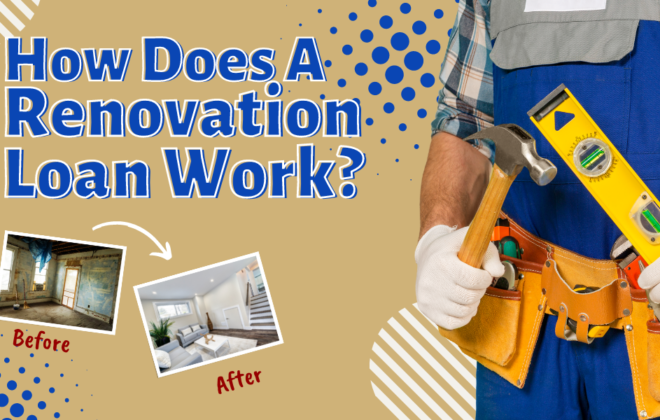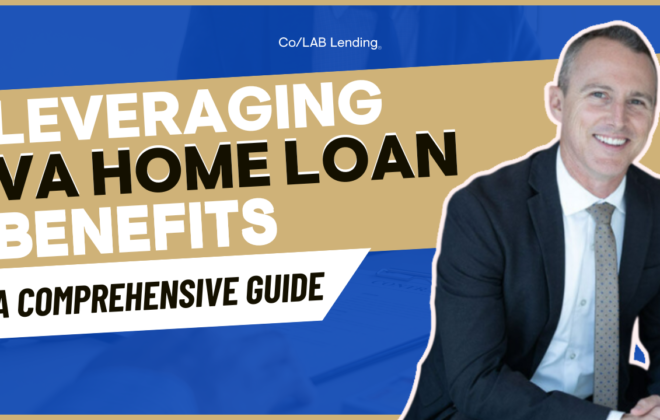The Comprehensive Guide to Refinancing
.
It can seem like the hoops you need to jump through to buy a home are endless. But once you’re approved for a mortgage and have closed on your house, you’re done dealing with home loans forever right? Not quite. It’s possible down the line that refinancing your mortgage could be beneficial to your situation. So what is refinancing? In its simplest terms, refinancing means you’re taking your existing mortgage and replacing it or paying it off with a new mortgage. Why in the world would anyone want to do that? For many people, it comes down to keeping more money in their wallets over the term of their new loan.
Everybody likes to save money, so you might be asking yourself if refinancing is the right move for you. This guide is here to help! It breaks down the mysteries and misconceptions associated with refinancing and answers common questions about the topic.
Understanding Refinancing: What It Is and How It Works
The term refinancing is one steeped in mystery for many people. In the case of mortgages, refinancing simply means to finance your home again, typically with a new loan at a lower rate of interest. When you refinance your mortgage, your bank or lender pays off your old mortgage with the new one.
Your mortgage payment
To better understand refinancing and why it could save you money, let’s break down the costs associated with your mortgage payment.
Principal: First up, there’s the principal, which is the amount of money you borrowed to buy your home. The balance of your principal reflects how much of the loan you have left to pay off.
Interest: Interest is the money you pay to use the money you’re borrowing. You receive an interest rate when you’re approved for a mortgage. The interest rate can factor in big when it comes to refinancing.
Property taxes: Property taxes are paid to a government agency—in most cases, your local city government—and typically fund services such as fire and police protection, utility infrastructure construction and repair, and other types of improvements.
Homeowners insurance: Also known as hazard insurance, this type of insurance covers damage and losses to your house and assets.
Mortgage insurance: Last but not least is mortgage insurance, also known as private mortgage insurance or PMI. This type of insurance protects your lender in the event you are unable to pay back your mortgage. It usually is included in situations where buyers don’t make a down payment of 20% of the house’s price.
Each of these elements has a role to play in refinancing but some have bigger impacts than others.
Types of refinancing
Just as with mortgages, there are different types of refinancing you can pursue. Which loan works best for you will depend on your current mortgage and situation.
Rate-and-term refinancing: This is the most common type of refinancing. Rate-and-term refinancing occurs when the original loan is paid and replaced with a new loan agreement that requires lower interest payments.
Streamline refinancing: If you have a government-backed housing loan, such as one through the Federal Housing Administration (FHA), Veterans Affairs (VA), or the U.S. Department of Agriculture (USDA), it’s possible you could qualify for a streamlined refinancing. This type of refinancing requires a smaller amount of paperwork than others, hence the name “streamline.” You might also see this type of refinancing referred to as an interest rate reduction refinance loan (IRRRL).
Cash-out refinancing: As the name implies, cash-out refinancing allows you to take money out of your home to use for expenses such as a renovation, paying off other debt, etc. How it works is by capitalizing on the value of your home or the equity you’ve put into your home. Equity refers to the portion of a home’s current value that you actually possess—essentially what you’ve paid into your home. Say you buy a $200,000 home with a down payment of $40,000 and a mortgage to cover the rest. At that moment in time, the amount of equity in your home is $40,000. Your equity grows as you pay down your mortgage and your home gains value.
Cash-out refinancing allows you to withdraw money from your home’s increased value or equity in exchange for a higher loan amount. So if you took out a $200,000 mortgage to purchase your home and now have $60,000 in equity, you can refinance to a mortgage of $260,000 if you want to spend your full equity. In this case, you get access to $60,000 and retain ownership of your home. Or if your home has increased in value by $30,000 since you purchased it, you can refinance to a loan of $230,000 and withdraw the difference between the purchased value and current value—in this case, $30,000.
Cash-in refinancing: As you can probably guess, a cash-in refinance is the opposite of a cash-out. A cash-in refinance allows you to pay down some portion of the loan for a lower loan-to-value (LTV) ratio or smaller loan payments. The LTV ratio is a value that reflects your lending risk and is examined by lenders before you’re approved for a mortgage. By lowering your LTV, it’s possible that you could qualify for a lower mortgage interest rate and save money in the long run.
Consolidation refinancing: As the name suggests, consolidation refinancing seeks to combine multiple loans into one with a better interest rate. In this scenario, you would apply for a new loan at a lower rate and then pay off your existing debt with the new loan. That means you’ll have one principal with substantially lower interest rate payments.
When meeting with a mortgage professional to discuss these refinancing options, make sure they’re talking to you about your goals and long-term plans. Based on that information, they should be showing you a few refinance products—not just one.
The refinancing process
With the types of refinancing you can pursue in mind, let’s get into how the process works.
The refinancing process is very similar to getting a mortgage when you purchase your home. You need to get pre-approved or have a mortgage professional review your mortgage information and your credit. This is where a mortgage adviser should give you a few options—and don’t be afraid to get a second opinion.
If the numbers make sense, and you want to go through with the refinance, that’s when you need to make an official mortgage application. This is where you will sign the loan paperwork and order an appraisal just like when you found your house and you applied for a mortgage.
After you’ve applied for your loan, your loan officer will send your application and your personal information to an underwriter. This person examines all of that information and if everything is satisfactory, they’ll issue a loan approval. The loan approval includes any new conditions on the loan, such as a lower interest rate. Once your team and the lending team agree on the conditions, then it’s on to closing. A closing disclosure is issued, and a closing date is scheduled.
Unlike closing on a house, you won’t be showing up at one meeting to finalize paperwork and collecting your keys with a refinance. Instead, there will be a three-day rescission (holding) period that gives you time to contemplate your decision to refinance and back out if you think it’s no longer the best option for you. If it is the right choice for you, then go ahead and sign those closing papers.
Reasons to refinance
So why do people refinance? There are a few common reasons.
Lower interest rate: The first and most common reason for refinancing is to secure a lower interest rate on a mortgage. When you refinance to a lower interest rate, you’re saving on the difference between your original and new rate.
Shorter mortgage term: People also refinance as a means of decreasing the length of their mortgage term. For example, if you purchased a home with a 30-year mortgage at 5% interest, you could possibly refinance to a shorter-term of 20 years at a lower rate and still have the same payment you’re making on your mortgage now.
Cash infusion: Another reason people choose to refinance is to pull cash out of their homes. As covered in the cash-out refinancing section, you can use this money to pay for school tuition, pay off medical bills, pay for home renovations, or invest money into stocks or property.
Home renovation: Finally, many people choose to use refinancing as a means of completing home renovations. In some cases, homeowners might not have equity to pull cash from, so there are options for you to refinance and roll your renovation costs and mortgage into one new loan.
Deciding to Refinance: When is the Ideal Time?
The answer to this question will depend on your personal situation. It’s best to take this question to a mortgage professional who can evaluate your current situation and determine if refinancing is the best course of action to take. Like home buying, refinancing is a complicated and sometimes convoluted process, so be sure to find a professional who is happy to take you through scenarios and explain everything to you—they should be playing the role of teacher, not a salesperson.
In general, refinancing comes down to if you can save money and if it makes sense with your overall life plan. For instance, if you plan on selling your home in the next two or three years, you might be better off not doing a refinance. But, if your plan is to put down roots and stay in your home for a long period of time, it’s possible that you could save money on your mortgage by refinancing.
Interest rates tend to drive refinancing trends, but there is no magic crystal ball that will tell you if rates are going to go higher or lower. In the end, the best advice is to work with a mortgage professional whose experience and recommendations you trust. You can save a lot more money by having a seasoned mortgage adviser in your corner who can give you all your options and look at the big picture to see if refinancing will save you money.
Building on that point, don’t ever feel like you’re bugging a mortgage professional with questions. Refinancing is a scary process that you may only go through once or twice in your life, but these professionals handle them every day and can provide valuable guidance and insight.
It’s worth noting that refinancing also depends on your equity and your credit score. If your score is lower than when you purchased your home, you may not get approval from your lender.
Mortgage Consultation Today!
Categories
- Credit (4)
- FHA Loans (3)
- Finances (3)
- First Time Home Buyers (6)
- Grab Bag (7)
- Home Technology (1)
- Homebuying Tips (17)
- Inspiration (1)
- Insurance (3)
- Interest Rates (3)
- Loan Process (1)
- Mortgage Financing (14)
- Motivation (1)
- News (1)
- Press Release (8)
- Renovation (2)
- Self Employed (1)
- Tips & tricks (1)
- Uncategorized (134)
- USDA Loans (1)
- VA Loans (2)




